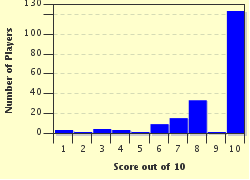Quiz Answer Key and Fun Facts
1. These toys were some of the first items to make use of the new celluloid material after its development in the middle of the 19th century.
2. During the 1970s these popular, noisy toys were banned by schools after a series of injuries were suffered by the children playing with them.
3. Which British school playground game had a tendency to get over-boisterous as more and more kids joined in the fun?
4. Electronics engineer Denys Fisher designed which drawing toy whilst working on new bomb detonators for NATO?
5. This popular game played with the fruit of a certain tree became the focus of health and safety issues during the 1980s and 1990s.
6. Literally minutes of fun were to be had in the 1950s and 1960s with this attractive sporting game!
7. ACDC... No, not THAT AC/DC, but the American Character Doll Company introduced which temperamental little doll in 1950?
8. This very popular 1960s toy was marketed as a 'One Man Army' or 'O.M.A'. What was it more commonly known as?
9. Initially only available in both mini and regular series, in 1964 the mighty series was introduced. Which popular toy brand was marketed as 'I'm Big - I'm Tough - I'm____?
10. Described as 'the doll you'll love to dress', who was released in the United Kingdom in September 1963 as the British rival to Barbie?
Source: Author
SisterSeagull
This quiz was reviewed by FunTrivia editor
Bruyere before going online.
Any errors found in FunTrivia content are routinely corrected through our feedback system.

